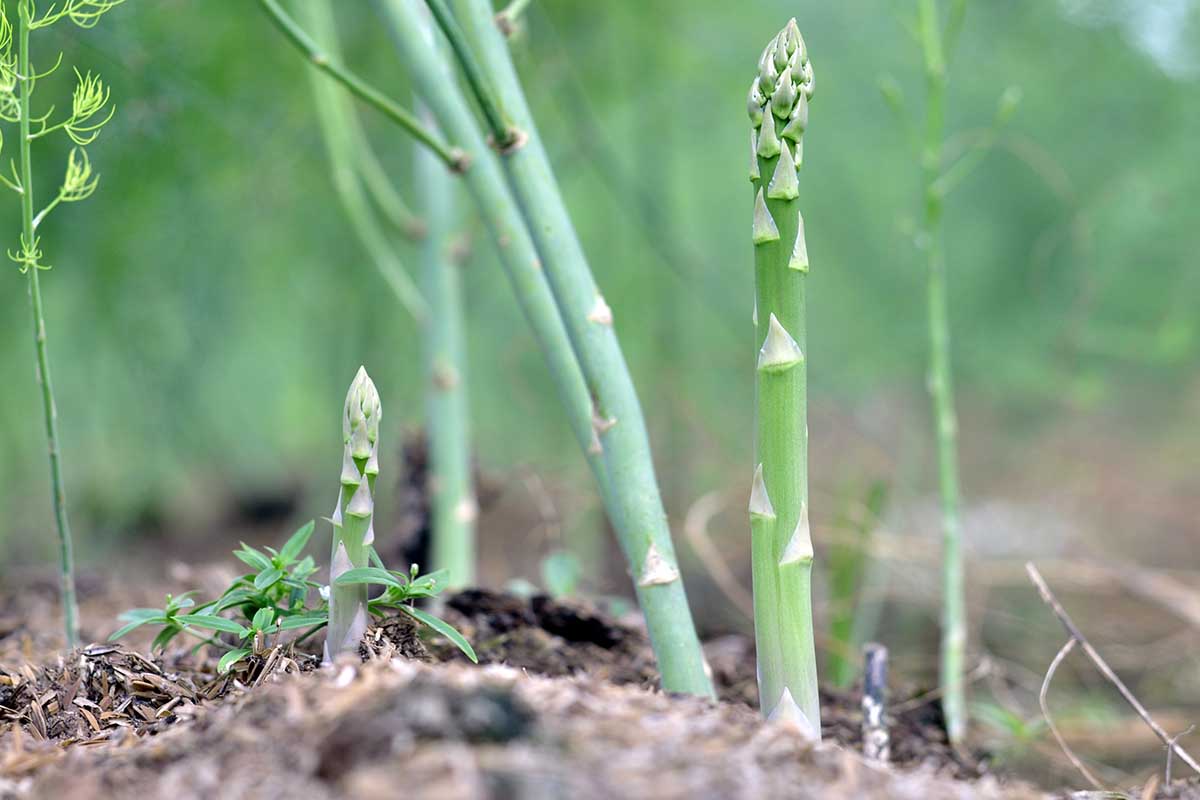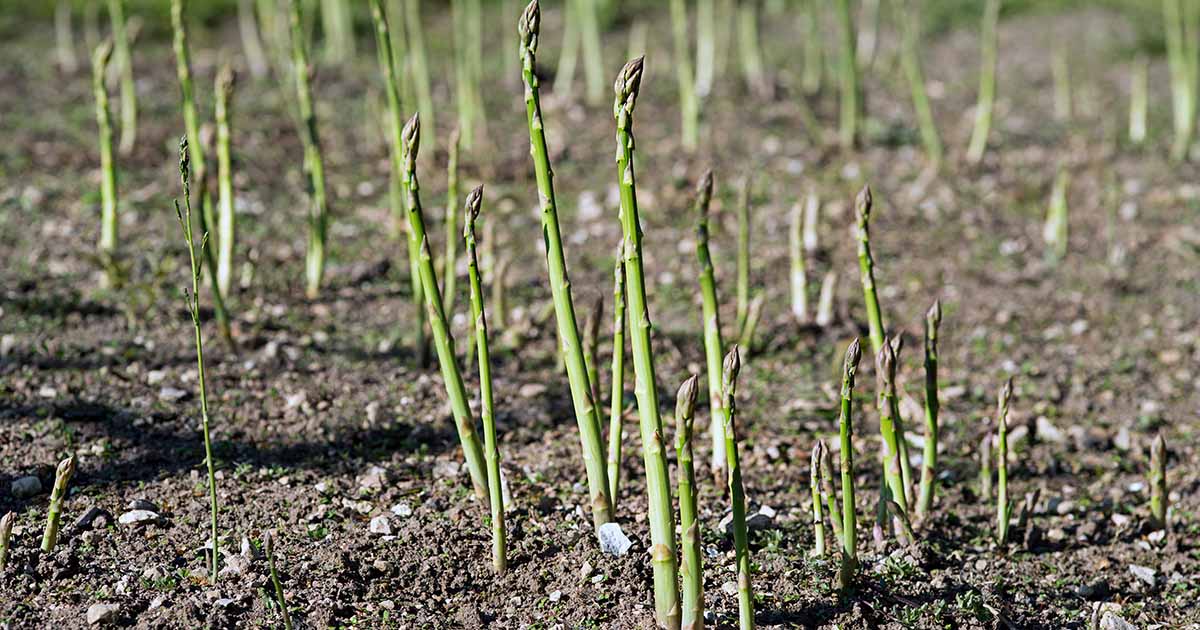Let’s take a look at the common culprits, to determine what you might be dealing with, and how to resolve it.
1. Not Planting Deeply Enough
Asparagus crowns prefer to be buried a few inches into the earth. They should be planted in rows about eight inches deep, so the shoots are facing up.
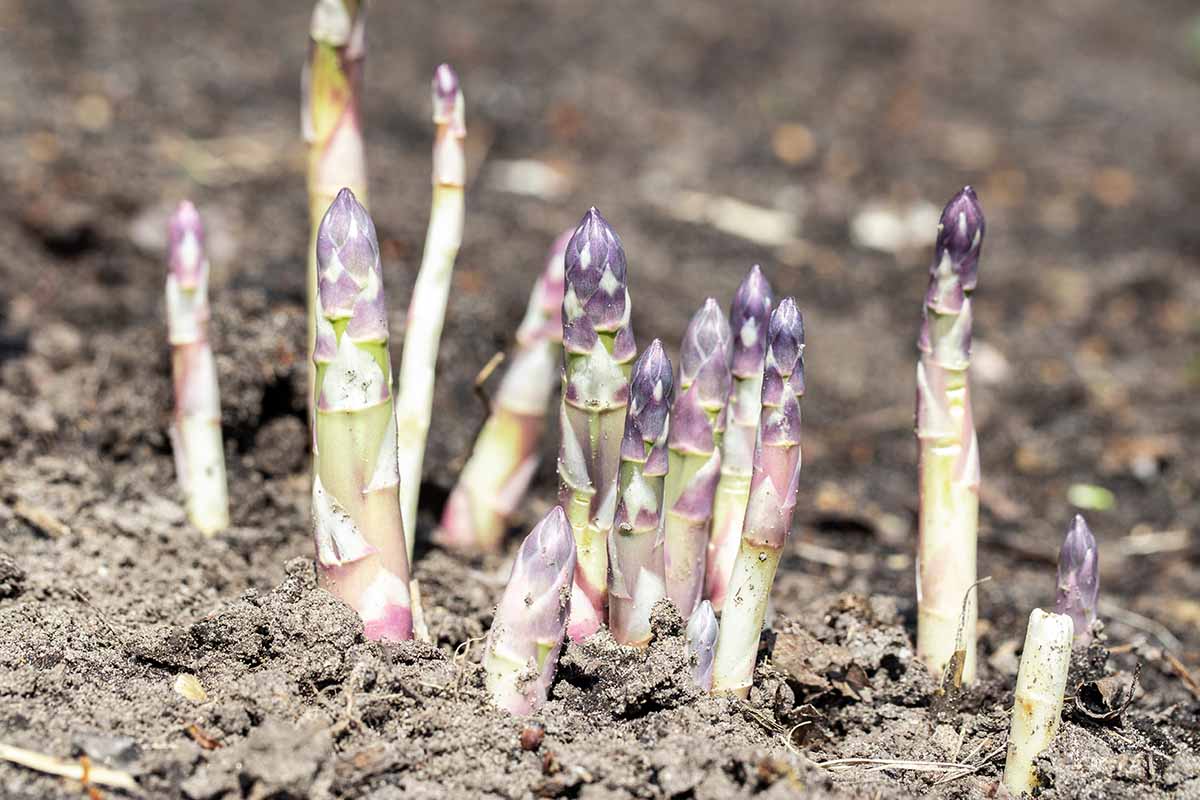

Cover crowns with three to five inches of soil, adding more as the shoots emerge until the trench is filled in.
If you notice the crowns are not quite deep enough, don’t fret, just add a couple of inches of soil until they are appropriately covered.
Check out our comprehensive guide to learn more about planting and growing asparagus.
2. Lack of Water
These plants are moderately drought tolerant and will survive without a lot of water, but dry conditions will cause them to grow more slowly and produce thinner, weaker stalks.
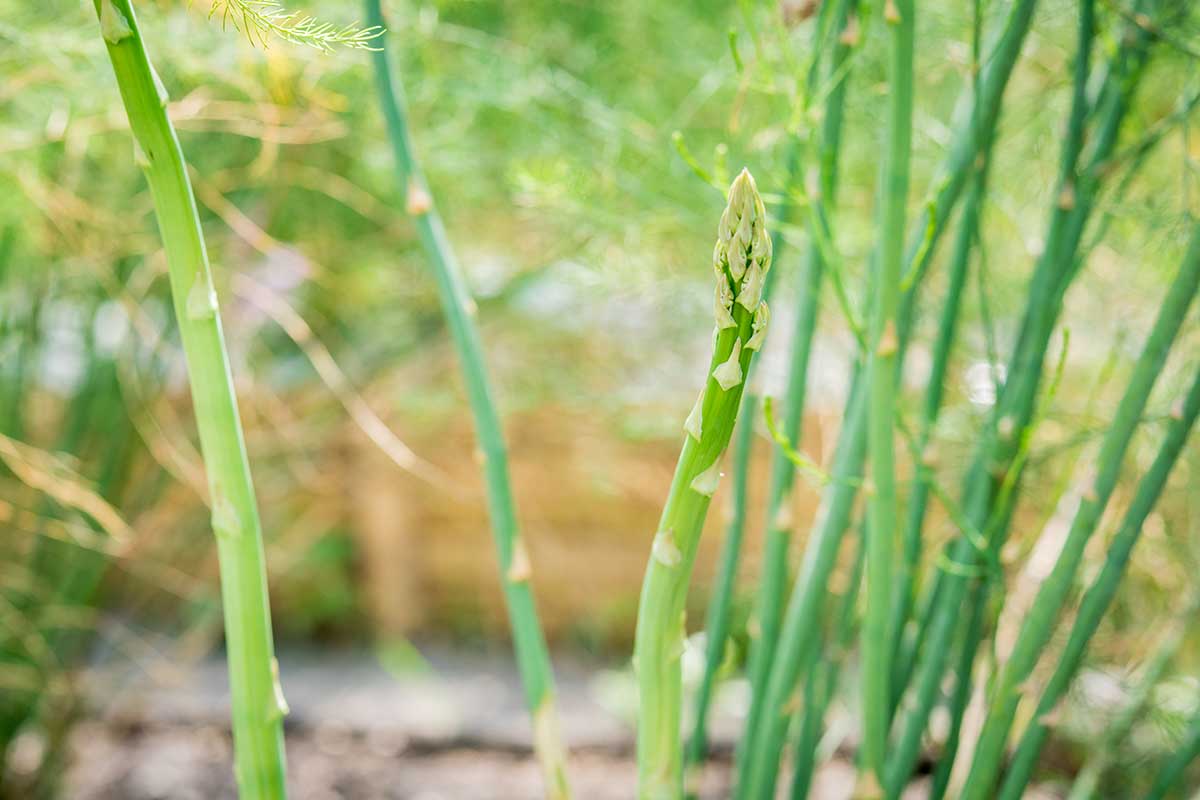

During the first couple of growing seasons, plants should receive one to two inches of water per week. Older plants need about one inch per week.
Water once or twice each week, or whenever the top inch of soil feels dry.
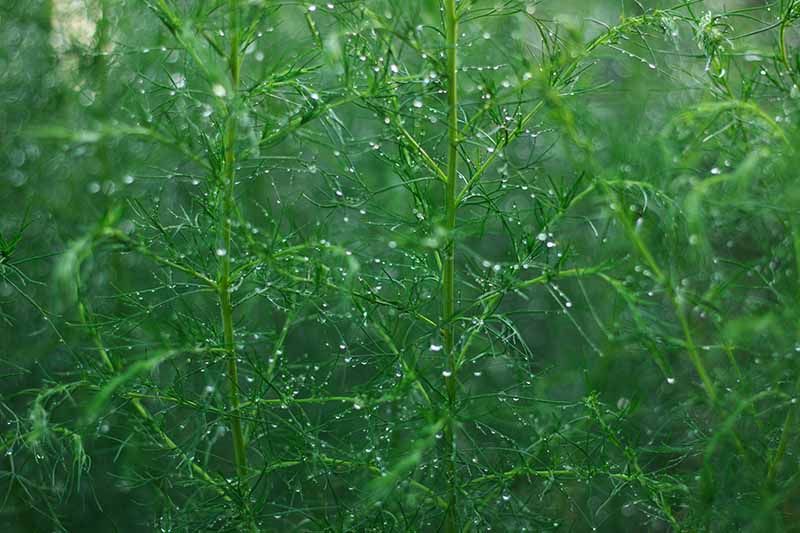

Since the crowns may be buried several inches below the soil, it is important to water deeply enough for the moisture to reach the roots.
3. Nutrient Deficiency
These heavy feeders should be planted in nutrient-rich soil amended heavily with compost.
Personally, I am not a fan of synthetic fertilizers and don’t use them in my garden. I have found that side dressing the garden bed with about an inch of compost each season seems to do the trick.
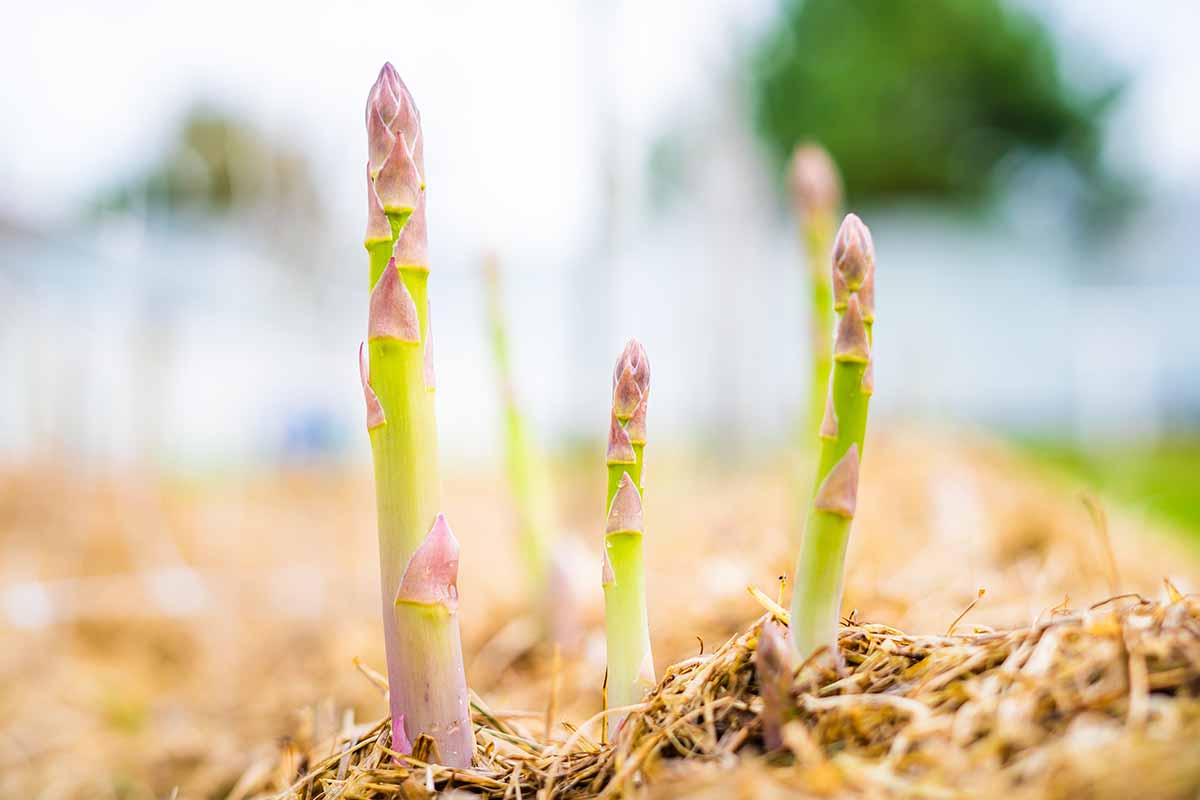

Once the spears begin to emerge, I also like to apply a thick mulch to build nutrients over time while also helping to retain moisture in the soil.
I personally use grass clippings, which are high in nitrogen and break down quickly. But straw, hay, bark, or shredded leaves will all work too.
If you choose to fertilize, do so in fall or early spring before shoots emerge, using an all-purpose organic fertilizer.
It is useful to add amendments high in phosphorus such as bone meal, aged manure, or rock phosphate to support healthy root growth. These can be added into the trench when planting, or sprinkled around the bed each spring.
This slow-release all-purpose fertilizer from Dr. Earth is made from natural, organic materials, and includes both bone meal and rock phosphate in its formula.


Dr. Earth All Purpose Fertilizer
It’s available in four-pound or twelve pound bags from Amazon.
4. Overharvesting
Even if your plants are producing the thickest possible spears, after about eight weeks, they will naturally reduce in thickness to about the size of a pencil and start to fern out.
This is a sign that it’s time to stop harvesting.
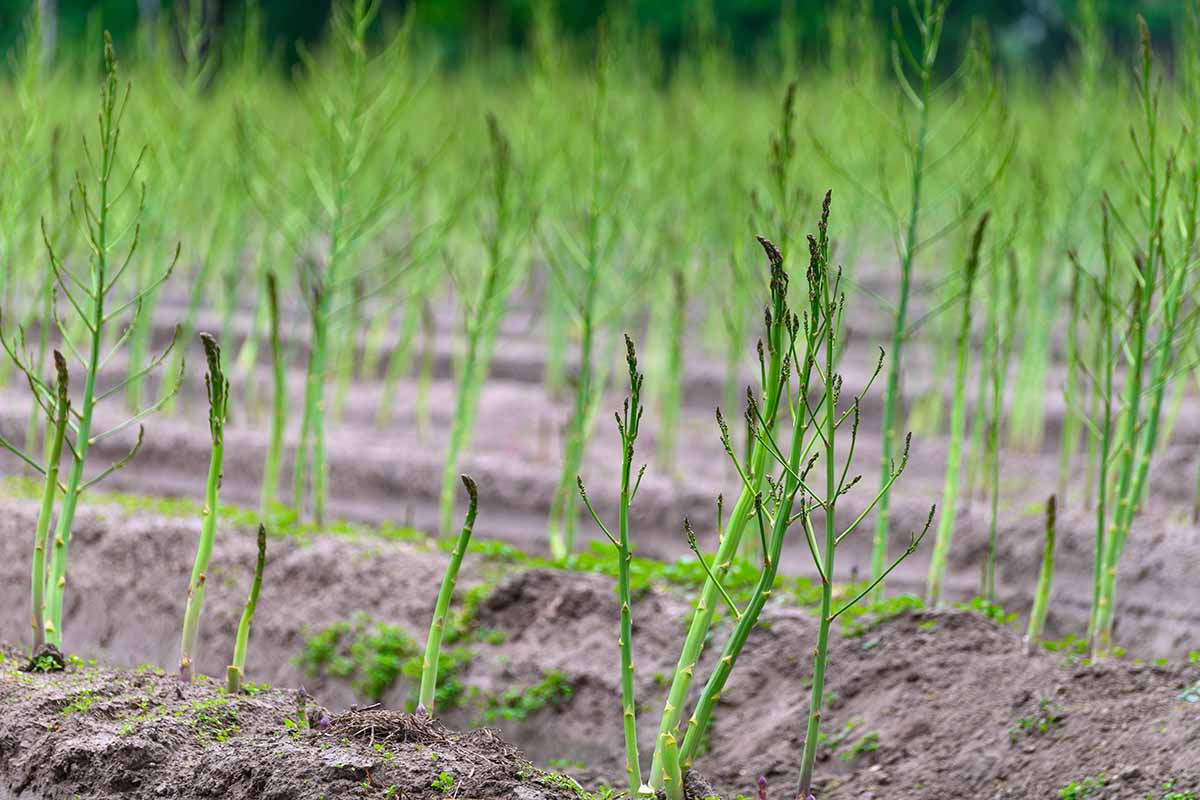

And while it may be tempting to cut back the long, fern-like foliage that grows after harvest season ends, resist the urge to do so until the fall, when the leaves yellow and begin to die back.
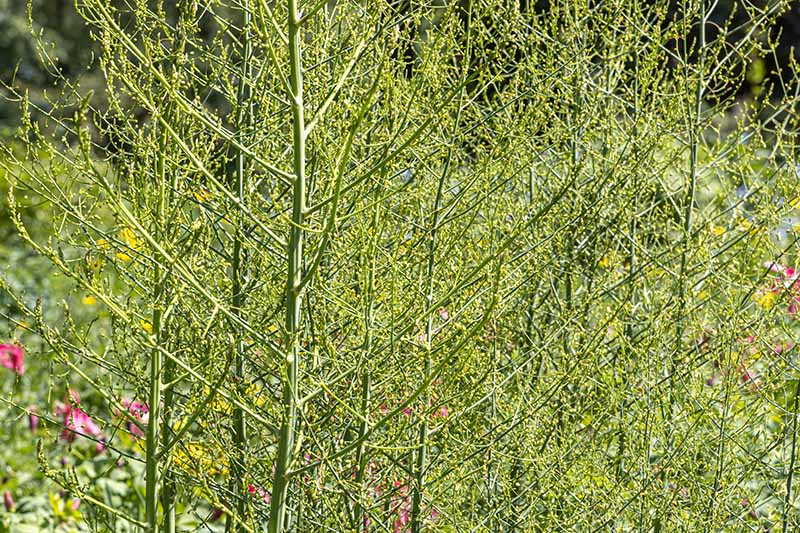

The foliage is important for photosynthesis, providing the crowns the nutrients they need to stay strong for the following season.
5. Age
Remember that it takes a few years for asparagus plants to be ready for harvest. These perennials need a few years to develop strong roots before they are ready to produce a full, thick crop.
Spears will be very thin during the first couple of seasons of growth. Harvesting is not advised for at least two years after planting, and should be done sparingly if at all in the third year.
